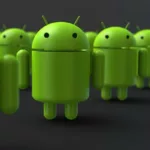Generic marketing material is now defunct because the rise of personalized digital communications has paved the way for bespoke and personal content that speaks directly to each individual consumer. Millennials are now watching more clips online than ever before and enterprises are using analytics and predictive data to take advantage of this trend to transform their marketing campaigns. This perfect storm of advancing tech and rising video consumption is enabling brands to deliver targeted content at the right time to boost engagement and build lasting, meaningful relationships.
Effective, targeted content
Video personalization enables brands to reach a variety of different customers with personal, creative messages rather than sending a single email or advert en masse. It uses personal data such as demographics, location, interests and browsing, and purchase history, to tailor content for an individual. Research shows that this personal touch can have a hugely positive impact on a range of key metrics including click-through-rates and it is likely to be more relevant, interesting and memorable for the end user. The possibilities for using personal information to deliver content that a customer wants and needs is near limitless, and a wealth of large corporations and brands are successfully deploying creative video campaigns to make them appear special, push them along the buying cycle and build brand loyalty.
Orange Telecom
Poland’s Orange Telecom recently created a personalized video campaign for thousands of customers nearing the end of their current contracts. The video discussed their specific plan, bills and usage patterns and offered them an upgrade to a new monthly mobile plan based on their circumstances. The campaign was a success as data showed that the clips were watched on two devices on average, which indicated that they were sharing the experience with friends and family. A third of those that viewed the video also renewed their contracts with orange. Up-selling is clearly one of the main benefits of video personalization for brands and businesses.
Nike +
Nike + is a mobile app for Apple smartphones that tracks and logs workouts and running times. Nike’s marketing team recently reached out to 100,000 users across the globe with a personal video documenting their exercise habits and celebrating fitness goals and achievements. The use of Nike branding in the message strengthens the idea that the athletic apparel and footwear giant has a vested interest in the user’s health and fitness, which increases brand affinity.
888poker
888poker also launched a personalized video initiative based on a player’s unique history on the website. The free clip uses data including the most frequent winning hand, biggest pot and country rank as part of a unique and personal storyboard. This type of video, like a recent campaign from Facebook, aims to create a meaningful connection between the player and brand so they continue to remain active on the platform.
Cadbury
Chocolate company Cadbury used data collected on social media to deliver a personalized video ad featuring Facebook photos and other information. The campaign proved to be a huge success with a 33.6 percent conversion rate and a substantial rise in click-through-rates.
Brands that pursue video personalization campaigns are putting themselves in a better position to serve the needs of their customers and become a mainstay in their digital lives.








